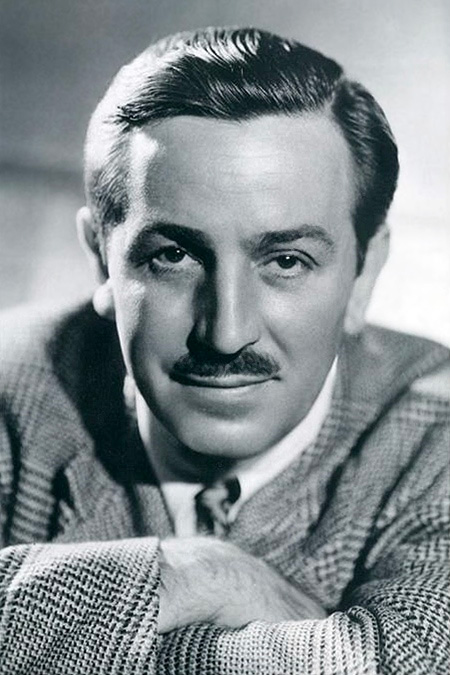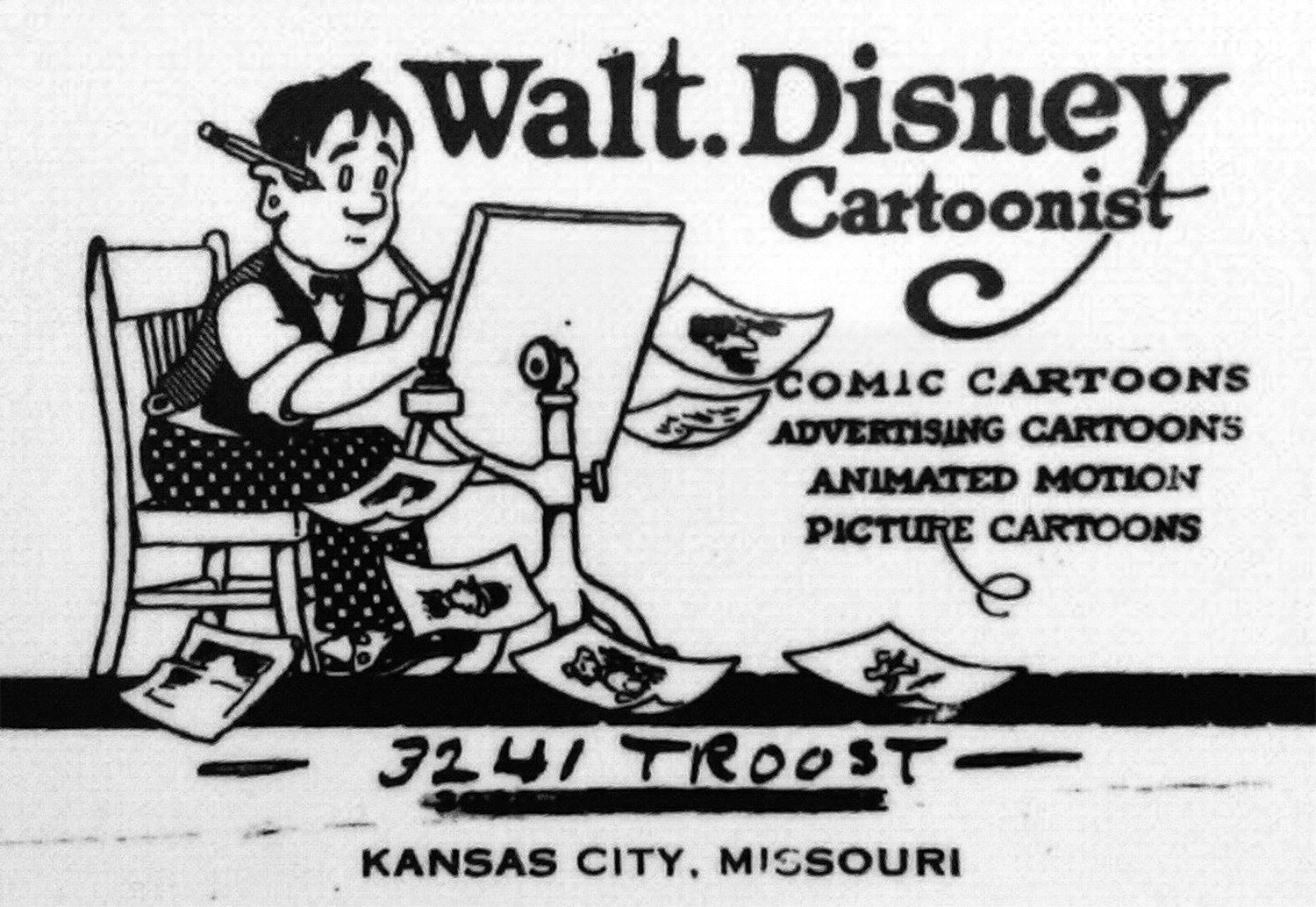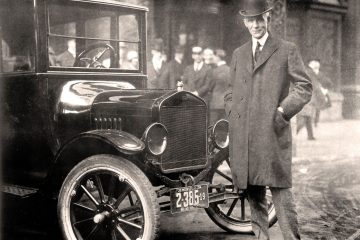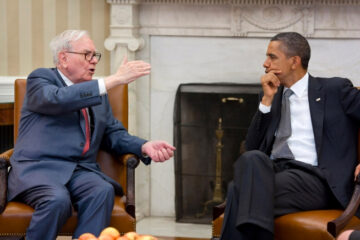 Bio and History of Walt Disney, Founder of The Walt Disney Company
Bio and History of Walt Disney, Founder of The Walt Disney Company
Full Name: Walter Elias Disney
Vitals: December 5, 1901 – December 15, 1966 (Born in Chicago, Illinois)
Known for: Entrepreneur, Animator, Film Producer, and Theme Park Creator (DisneyLand)
Company: Disney Brothers Studio (now The Walt Disney Company)
Education: McKinley High School, night courses at the Chicago Academy of Fine Arts
How Started: Born in Chicago in 1901, Disney showed a passion for drawing and storytelling from a young age. After working various jobs as a cartoonist and animator, he co-founded the Disney Brothers Studio with his brother Roy in 1923. Their first major success came with the creation of Mickey Mouse in 1928, marking the beginning of Disney’s legendary career in animation and entertainment. Through innovation, creativity, and determination, Disney built an empire that continues to inspire and enchant audiences worldwide.
……
Summary Bio
Walt Disney’s life story is a remarkable journey from a small-town boy to the pioneer of animation who transformed the entertainment industry. His legacy is not just in the creation of a multimedia empire but also in his impact on popular culture and innovation in animation, theme parks, and storytelling.
Early Years and Education
Walter Elias Disney was born on December 5, 1901, in Chicago, Illinois, to Elias and Flora Call Disney. He was one of five children, with three brothers and a sister. The Disney family moved to a farm in Marceline, Missouri, when Walt was very young. It was in Marceline, a town that Walt later said inspired the Main Street, U.S.A. section of Disneyland, that he developed a love for drawing and trains. The Disney family moved again in 1911, this time to Kansas City, where Walt attended Benton Grammar School. He took Saturday courses at the Kansas City Art Institute and later attended McKinley High School in Chicago while taking night courses at the Chicago Art Institute.
Early Career and First Ventures
After a brief stint with the Red Cross as an ambulance driver during World War I, Disney returned to Kansas City in 1919, aspiring to become a newspaper artist. His brother Roy got him a job at the Pesmen-Rubin Art Studio, where he met Ub Iwerks, a talented animator who would become a long-time collaborator.
In 1920, Disney and Iwerks founded Iwerks-Disney Commercial Artists, but the venture was short-lived. Disney then joined the Kansas City Film Ad Company, where he became interested in animation. He made his first forays into animation with a series of shorts called “Laugh-O-Grams,” which were popular but financially unsuccessful. The Laugh-O-Gram Studio declared bankruptcy in 1923.
Hollywood and the Birth of Mickey Mouse
Disney moved to Hollywood in 1923 and, with Roy, founded the Disney Brothers Studio. Their first major success came with the “Alice Comedies,” which featured a live-action girl in an animated world. In 1928, facing the loss of the rights to Oswald the Lucky Rabbit, his first successful character, Disney and Iwerks created Mickey Mouse. Mickey’s first synchronized sound cartoon, “Steamboat Willie,” premiered in 1928 and was a sensational success.
The Golden Age of Animation
Under Disney’s leadership, the studio produced a series of groundbreaking animations, including the first synchronized sound cartoon (“Steamboat Willie”), the first full-color cartoon (“Flowers and Trees”), and the first full-length animated feature film (“Snow White and the Seven Dwarfs” in 1937). This period saw the creation of other iconic characters such as Donald Duck, Goofy, and Pluto.
Disney’s studio also introduced technological innovations like the multiplane camera, which added depth to animated scenes. The success of Disney’s feature films, including “Pinocchio,” “Fantasia,” “Dumbo,” and “Bambi,” established Disney as a leading figure in animation.
Expansion Beyond Animation
Walt Disney’s vision extended beyond animation. In 1955, he opened Disneyland in Anaheim, California, bringing his characters and stories into the three-dimensional world. This theme park was followed by the even more ambitious Walt Disney World in Florida, which opened in 1971, five years after Disney’s death.
Leadership and Management Style
As a leader, Disney was known for his demanding standards and relentless pursuit of perfection. He fostered a culture of innovation and creativity but was also known for being a strict and demanding boss. His management style was central to the company’s ability to push boundaries and achieve unprecedented success in animation and entertainment.
Personal Life and Death
Walt Disney married Lillian Bounds in 1925, and they had two daughters, Diane Marie Disney and Sharon Mae Disney. Disney was known for his dedication to his work, often spending long hours at the studio.
Walt Disney passed away on December 15, 1966, from lung cancer, leaving behind a vast legacy that transformed the entertainment industry. His innovations in animation, storytelling, and theme park design have endured, making him a central figure in the history of entertainment.
Legacy
Walt Disney’s impact on animation and entertainment is immeasurable. The Walt Disney Company has grown into a global entertainment conglomerate, continuing Disney’s legacy of innovation and storytelling. Disney’s work has been recognized with numerous awards, including Oscars and the Presidential Medal of Freedom. His legacy is also preserved in the Walt Disney Family Museum in San Francisco, which showcases his life and achievements.
Disney’s story is one of imagination, innovation, and the relentless pursuit of excellence. His contributions to entertainment continue to delight and inspire generations around the world, making him an enduring symbol of creativity and wonder.
December 5, 1901: Walt Disney is born in Chicago, Illinois.
1911: The Disney family moves to Kansas City, where Walt develops an interest in drawing from cartoonist Leroy Gossett.
1917: The Disney family moves to Chicago, where Walt attends McKinley High School and takes night courses at the Chicago Academy of Fine Arts.
1918: At the age of 16, Disney attempted to enlist in the United States Army but was rejected because he was underage. Not deterred, he joined the Red Cross Ambulance Corps, where he was eventually sent overseas. Disney spent about a year in France driving an ambulance and doing other tasks for the Red Cross until he was discharged in 1919.
1920: Walt returns to Kansas City to start his first animation business, Laugh-O-Gram Studio, which eventually goes bankrupt in 1923.
August 1923: Walt Disney moves to Hollywood, California, and with his brother Roy O. Disney, he sets up the Disney Brothers Studio.
1927: Disney creates Oswald the Lucky Rabbit, but loses the character to Universal Pictures due to contract issues.
November 18, 1928: Mickey Mouse makes his first appearance in “Steamboat Willie,” the first synchronized sound cartoon.
1930: Disney signs a contract with Pat Powers to use the Cinephone recording system, increasing Mickey Mouse’s popularity.
1932: The Silly Symphonies series wins the Academy Award for Best Animated Short Film for “Flowers and Trees,” the first cartoon to use Technicolor.
February 23, 1935: “The Band Concert,” the first Mickey Mouse cartoon in color, is released.
December 21, 1937: Disney releases “Snow White and the Seven Dwarfs,” the first full-length animated feature film.
1940: Disney opens its new studio in Burbank, California, and releases “Fantasia” and “Pinocchio.”
1941: The Disney animators’ strike occurs, leading to significant changes in the studio’s working environment.
1942: “Bambi” is released, known for its realistic animation and environmental themes.
1950: Disney ventures into live-action films with “Treasure Island.”
1953: Disney creates the first widescreen format cartoon, “Melody,” and later introduces CinemaScope in “Lady and the Tramp” (1955).
July 17, 1955: Disneyland opens in Anaheim, California, as the first Disney theme park.
1959: The first daily-operating monorail system in the Western Hemisphere opens at Disneyland.
1961: Disney expands its television presence with “Walt Disney’s Wonderful World of Color.”
1964: “Mary Poppins,” combining live-action and animation, is released, becoming one of Disney’s most acclaimed films.
1965: Disney announces plans for Disney World in Florida, including the Magic Kingdom and EPCOT.
December 15, 1966: Walt Disney passes away at the age of 65.
1967: Roy O. Disney postpones his retirement to oversee the completion of Walt Disney World.
October 1, 1971: Walt Disney World Resort opens in Orlando, Florida.
December 20, 1971: Roy O. Disney passes away a few months after the opening of Walt Disney World.
1983: Tokyo Disneyland, the first Disney theme park outside the United States, opens.
1987: The first Disney Store opens, in Glendale, California.
1992: Euro Disneyland (now Disneyland Paris) opens in Marne-la-Vallée, France.
1996: Disney acquires Capital Cities/ABC, gaining several television networks.
2001: Disney California Adventure Park opens adjacent to Disneyland.
2005: Hong Kong Disneyland, the first Disney theme park in China, opens.
MORE:
Detailed History and Biography of Walt Disney »
History of The Walt Disney Company »
History of Laugh-O-Gram Studios »
Main Image Source: Wikimedia Commons | Photo of Walt Disney: Wikimedia Commons
Content sources: Original | Generative AI | Wikipedia



